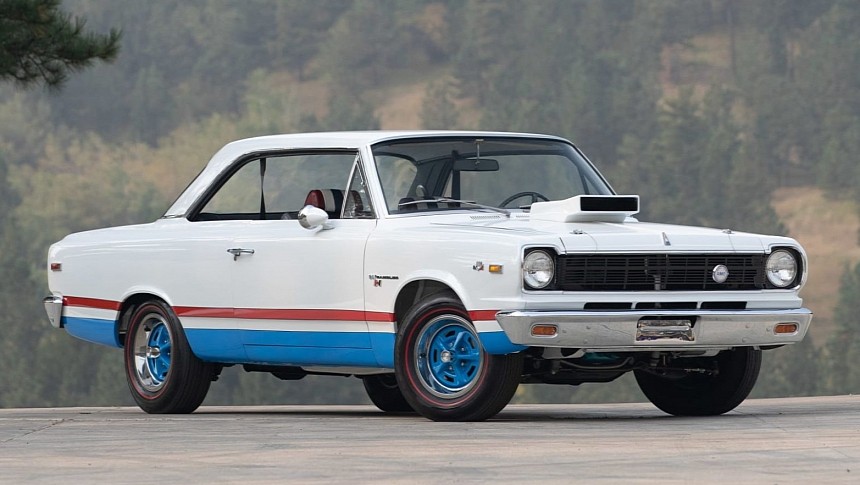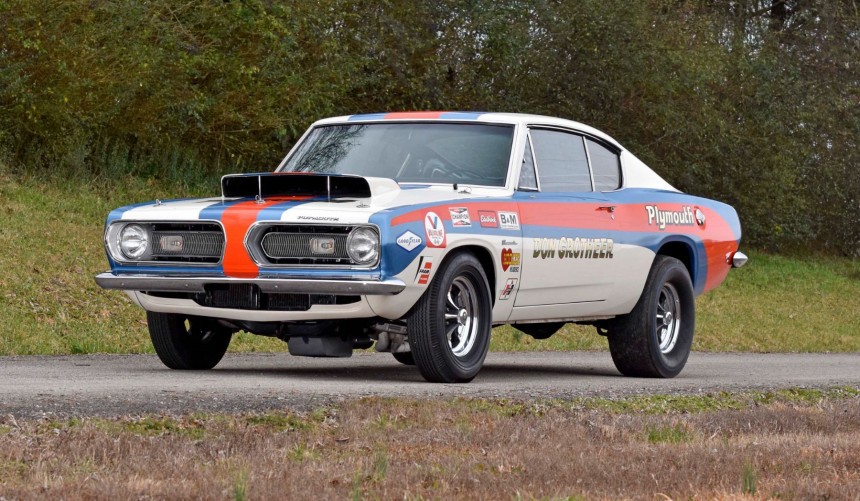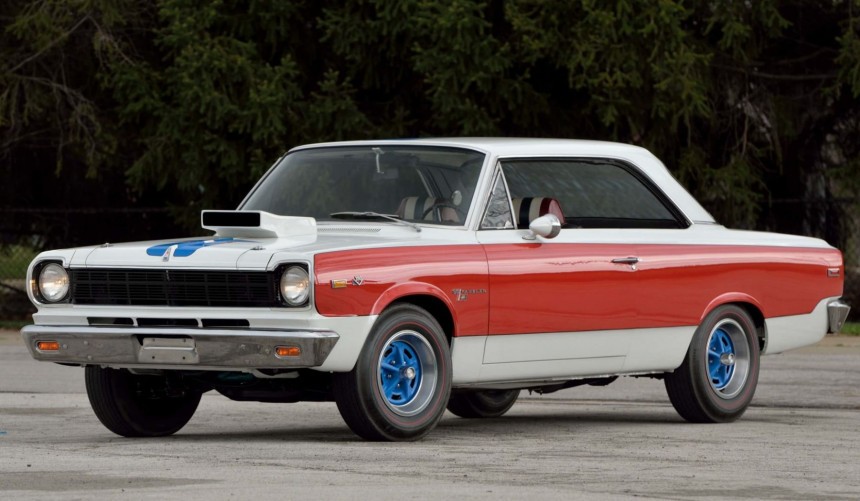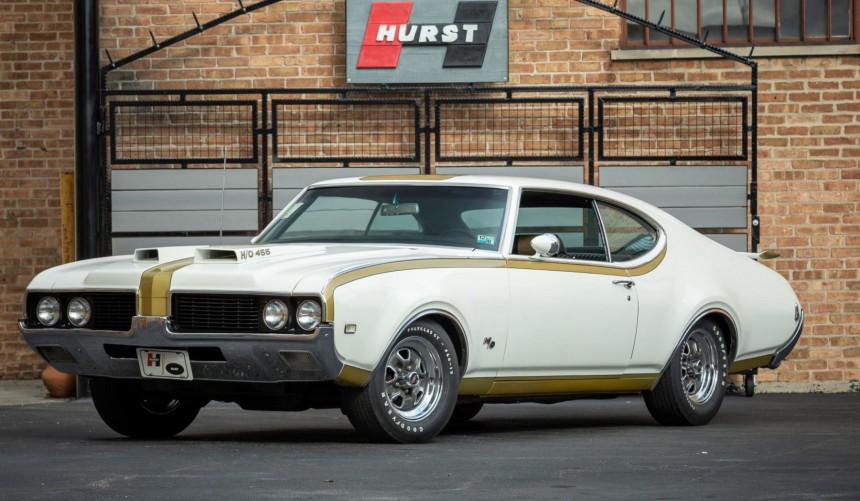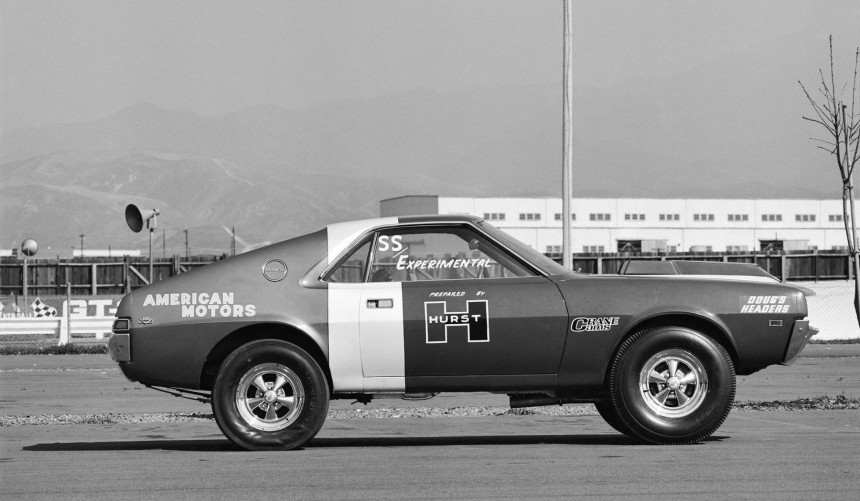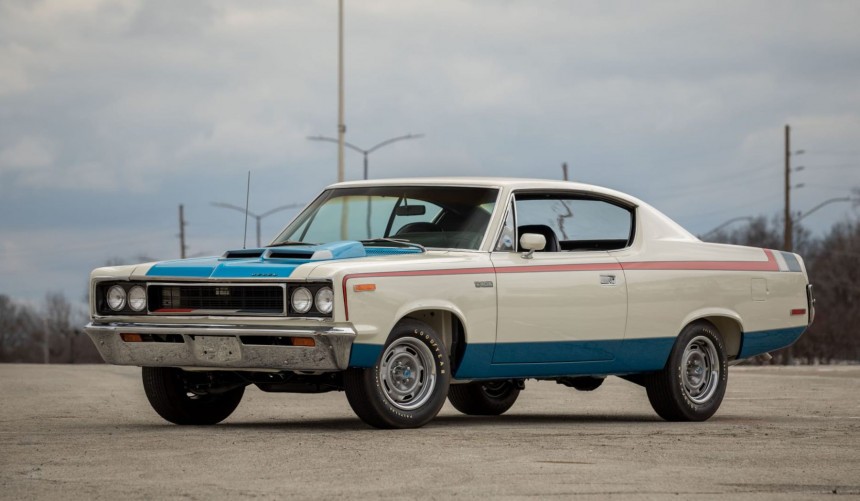The top OEM and aftermarket shifter manufacturer during the golden age of muscle cars, Hurst was also involved in developing some of the era's most iconic high-performance models.
Founded in 1958 by George Hurst and Bill Campbell, the company, initially named Hurst-Campbell, started as an auto repair shop in Glenside, Pennsylvania.
In the following years, it moved to a larger facility in Warminster Township, Pennsylvania, and became one of the country's most renowned aftermarket manufacturers of OEM and aftermarket components.
Renamed Hurst Performance, the company rose to fame, mainly due to its shifters, but it also pioneered other products, like the hydraulic rescue tool known as "Jaws of Life."
Besides its products, Hurst was also heavily involved in developing and manufacturing some of the most legendary muscle cars of the sixties and seventies.
Two of the most famous were the Hemi Underglass and Hairy Olds, but those "franken-rides" were specifically built exhibition dragsters.
In this article, we'll cover the more conventional, customer-oriented, series-production muscle cars that became iconic thanks to Hurst's involvement.
Though the first-gen Barracuda was launched about two weeks before the Mustang, it was no match for the car that coined the pony car segment.
By 1967, the sales gap between the two models was humongous, so in an effort to boost the 'Cuda's popularity, Plymouth approved the creation of a drag racing-only, limited edition, enlisting Hurst Performance to help.
Available during the 1968 model year in select dealerships, the B029 Barracuda was modified by Hurst, who added a series of fiberglass components, front disc brakes, a heavy-duty rear suspension, and a series of other performance-enhancing upgrades.
The most impressive upgrade of all was found under the bespoke scooped hood. Unlike the street-legal 'Cuda, the Super Stock became the first Chrysler pony car powered by the legendary 426-ci (7.0-liter) HEMI.
On paper, the engine was rated at 425 hp, just like any other street HEMI. However, it featured many upgraded components that reportedly pushed output in the 600-hp range.
Delivered to customers without a paint job, the B029 Super Stock was manufactured in around 50 units (some sources say 70), the vast majority of which were heavily raced.
The American Motors Corporation was slow to react to changing marketing trends. By the late 1960s, the company realized that developing a thoroughbred muscle car was the only way to attract younger buyers to their dealerships.
To do that, AMC partnered up with Hurst and devised a simple recipe: take the 315-hp, 390-ci (6.5-liter) V8 from the AMX two-seater and stuff it inside the engine bay of the compact, two-door hardtop Rambler.
Apart from the potent engine, the 1969 Hurst SC/Rambler received a four-speed manual T-10 with close gear ratios, a Twin-Grip limited-slip differential, front disc brakes, beefier suspension components, dual exhausts, and a bespoke hood with a huge, functional scoop.
The result was an unlikely super car (hence the SC moniker) that could run the quarter mile in the low 14-second range.
Available in one of two patriotic-style paint schemes, the Hurst SC/Rambler was manufactured in 1,512 units.
The story goes that Jack "Doc" Watson created a 4-4-2 for show car for Hurst. John Demmer, a Michigan-based industrialist, saw the car and liked it so much that he offered to finance a limited production run.
Demmer presented the idea to Oldsmobile executives, who agreed to greenlight the project, which eventually became the 1968 Hurst/Olds.
Donning a custom Peruvian Silver paint with black accents, the model was available in either sport coupe or Holiday Coupe body styles and featured a standard 390-hp, 455-ci (7.5-liter) big-block modified by Hurst. For A/C-equipped cars, a milder, 380-hp version of the engine was installed.
Since engine assembly was done at Demmer's plant, the Hurst/Olds bypassed GM's 400-ci (6.5-liter) ban, becoming the only pre-1970 GM intermediate with such a large-displacement V8.
The collaboration with Olds continued for the 1969 model year when the Hurst/Olds received a new Firefrost Gold and White paint scheme. Moreover, the 380-hp 455 previously available on A/C-equipped cars was now used for both A/C and non-A/C cars.
After a two-year run with approximately 1,400 units hitting the streets, the Hurst/Olds was temporarily dropped but made several comebacks during the seventies and eighties.
The SC/Rambler wasn't the only product of the AMC-Hurst collaboration introduced in 1968.
While the street-legal "Scrambler" was developed to attract younger buyers and also compete in the National Hot Rod Association's (NHRA) F/Stock class, AMC wanted to promote the AMX by racing it in the Super Stock/E class.
To homologate the model, AMC and Hurst partnered with famed drag racer Shirley "The Drag-On Lady" Shahan and her husband, engine builder H. L. Shahan.
The result of this epic collaboration was the AMX Super Stock, a drag racing-only homologation special that received a weight-saving treatment and a tuned 390-ci (6.4-liter) V8.
The engine was purposefully underrated at 420 hp to gain entry in the SS/E class. However, it made closer to 600 hp, which NHRA officials got wind of, leading them to homologate the car for the more competitive SS/G class.
Nevertheless, since it could effortlessly run the quarter mile in 11 seconds, the AMX Super Stock broke many class speed and ET records.
Only 53 units of this incredible machine were built, and although they all saw a lot of racing, it's estimated that around 40 are still around today.
With the "Scrambler" proving to be a huge success, AMC decided to extend their partnership with Hurst Performance and create a worthy successor for the 1970 model year.
Dubbed "The Machine," one of the coolest names ever given to a vehicle, the Rebel-based muscle car took the recipe used to cook up its predecessor to another level.
The 390-ci (6.4-liter) was carried over, but with the help of Hurst, it received new cylinder heads, a high-flow dual-plane intake, and bigger exhaust manifolds.
With these upgrades, the V8 was rated at 340 hp, a 25-hp increase over the SC/Rambler's unit, making it the most powerful engine ever fitted into a street-legal AMC.
The upgrades weren't limited to the engine, as The Machine received power front disc brakes, a beefed-up suspension with rear springs borrowed from the Rebel station wagon, anti-roll bars on both axles, and a Twin-Grip limited-slip diff.
Initially, it donned an exclusive red, white, and blue paint scheme, but a few other schemes were added later in the model year.
A one-year-only model, The Machine was built in 2,326 units. These days, surviving examples are some of the most expensive and sought-after AMC cars.
In the following years, it moved to a larger facility in Warminster Township, Pennsylvania, and became one of the country's most renowned aftermarket manufacturers of OEM and aftermarket components.
Renamed Hurst Performance, the company rose to fame, mainly due to its shifters, but it also pioneered other products, like the hydraulic rescue tool known as "Jaws of Life."
Besides its products, Hurst was also heavily involved in developing and manufacturing some of the most legendary muscle cars of the sixties and seventies.
Two of the most famous were the Hemi Underglass and Hairy Olds, but those "franken-rides" were specifically built exhibition dragsters.
In this article, we'll cover the more conventional, customer-oriented, series-production muscle cars that became iconic thanks to Hurst's involvement.
1968 Plymouth Barracuda B029 Super Stock
By 1967, the sales gap between the two models was humongous, so in an effort to boost the 'Cuda's popularity, Plymouth approved the creation of a drag racing-only, limited edition, enlisting Hurst Performance to help.
Available during the 1968 model year in select dealerships, the B029 Barracuda was modified by Hurst, who added a series of fiberglass components, front disc brakes, a heavy-duty rear suspension, and a series of other performance-enhancing upgrades.
The most impressive upgrade of all was found under the bespoke scooped hood. Unlike the street-legal 'Cuda, the Super Stock became the first Chrysler pony car powered by the legendary 426-ci (7.0-liter) HEMI.
On paper, the engine was rated at 425 hp, just like any other street HEMI. However, it featured many upgraded components that reportedly pushed output in the 600-hp range.
Delivered to customers without a paint job, the B029 Super Stock was manufactured in around 50 units (some sources say 70), the vast majority of which were heavily raced.
1969 AMC Hurst SC/Rambler
To do that, AMC partnered up with Hurst and devised a simple recipe: take the 315-hp, 390-ci (6.5-liter) V8 from the AMX two-seater and stuff it inside the engine bay of the compact, two-door hardtop Rambler.
Apart from the potent engine, the 1969 Hurst SC/Rambler received a four-speed manual T-10 with close gear ratios, a Twin-Grip limited-slip differential, front disc brakes, beefier suspension components, dual exhausts, and a bespoke hood with a huge, functional scoop.
The result was an unlikely super car (hence the SC moniker) that could run the quarter mile in the low 14-second range.
Available in one of two patriotic-style paint schemes, the Hurst SC/Rambler was manufactured in 1,512 units.
1968-1969 Hurst/Olds
Demmer presented the idea to Oldsmobile executives, who agreed to greenlight the project, which eventually became the 1968 Hurst/Olds.
Donning a custom Peruvian Silver paint with black accents, the model was available in either sport coupe or Holiday Coupe body styles and featured a standard 390-hp, 455-ci (7.5-liter) big-block modified by Hurst. For A/C-equipped cars, a milder, 380-hp version of the engine was installed.
Since engine assembly was done at Demmer's plant, the Hurst/Olds bypassed GM's 400-ci (6.5-liter) ban, becoming the only pre-1970 GM intermediate with such a large-displacement V8.
The collaboration with Olds continued for the 1969 model year when the Hurst/Olds received a new Firefrost Gold and White paint scheme. Moreover, the 380-hp 455 previously available on A/C-equipped cars was now used for both A/C and non-A/C cars.
After a two-year run with approximately 1,400 units hitting the streets, the Hurst/Olds was temporarily dropped but made several comebacks during the seventies and eighties.
1969 AMC AMX Super Stock
While the street-legal "Scrambler" was developed to attract younger buyers and also compete in the National Hot Rod Association's (NHRA) F/Stock class, AMC wanted to promote the AMX by racing it in the Super Stock/E class.
To homologate the model, AMC and Hurst partnered with famed drag racer Shirley "The Drag-On Lady" Shahan and her husband, engine builder H. L. Shahan.
The result of this epic collaboration was the AMX Super Stock, a drag racing-only homologation special that received a weight-saving treatment and a tuned 390-ci (6.4-liter) V8.
The engine was purposefully underrated at 420 hp to gain entry in the SS/E class. However, it made closer to 600 hp, which NHRA officials got wind of, leading them to homologate the car for the more competitive SS/G class.
Nevertheless, since it could effortlessly run the quarter mile in 11 seconds, the AMX Super Stock broke many class speed and ET records.
Only 53 units of this incredible machine were built, and although they all saw a lot of racing, it's estimated that around 40 are still around today.
1970 AMC Rebel "The Machine"
Dubbed "The Machine," one of the coolest names ever given to a vehicle, the Rebel-based muscle car took the recipe used to cook up its predecessor to another level.
The 390-ci (6.4-liter) was carried over, but with the help of Hurst, it received new cylinder heads, a high-flow dual-plane intake, and bigger exhaust manifolds.
With these upgrades, the V8 was rated at 340 hp, a 25-hp increase over the SC/Rambler's unit, making it the most powerful engine ever fitted into a street-legal AMC.
The upgrades weren't limited to the engine, as The Machine received power front disc brakes, a beefed-up suspension with rear springs borrowed from the Rebel station wagon, anti-roll bars on both axles, and a Twin-Grip limited-slip diff.
Initially, it donned an exclusive red, white, and blue paint scheme, but a few other schemes were added later in the model year.
A one-year-only model, The Machine was built in 2,326 units. These days, surviving examples are some of the most expensive and sought-after AMC cars.
